Abstract
The Repliscan system, a semiautomated method for identifying gram-negative bacilli, was evaluated for its potential usefulness in clinical microbiology laboratories. A total of 1,877 isolates, including 1,712 fermentative and 165 nonfermentative organisms, were tested in parallel with the Repliscan and Enterotube methods of enteric identification. Discrepancies were retested in each system as well as with conventional methods. The Repliscan method correctly identified 91%, misidentified 2%, and failed to identify 7% of the fermentative orgamisms tested. Of the genera under study, Enterobacter posed the greatest problem to the system in terms of overall identification rates. The Repliscan appears to be an efficient, economic, and effective laboratory tool for identification of Enterobacteriaceae.
Full text
PDF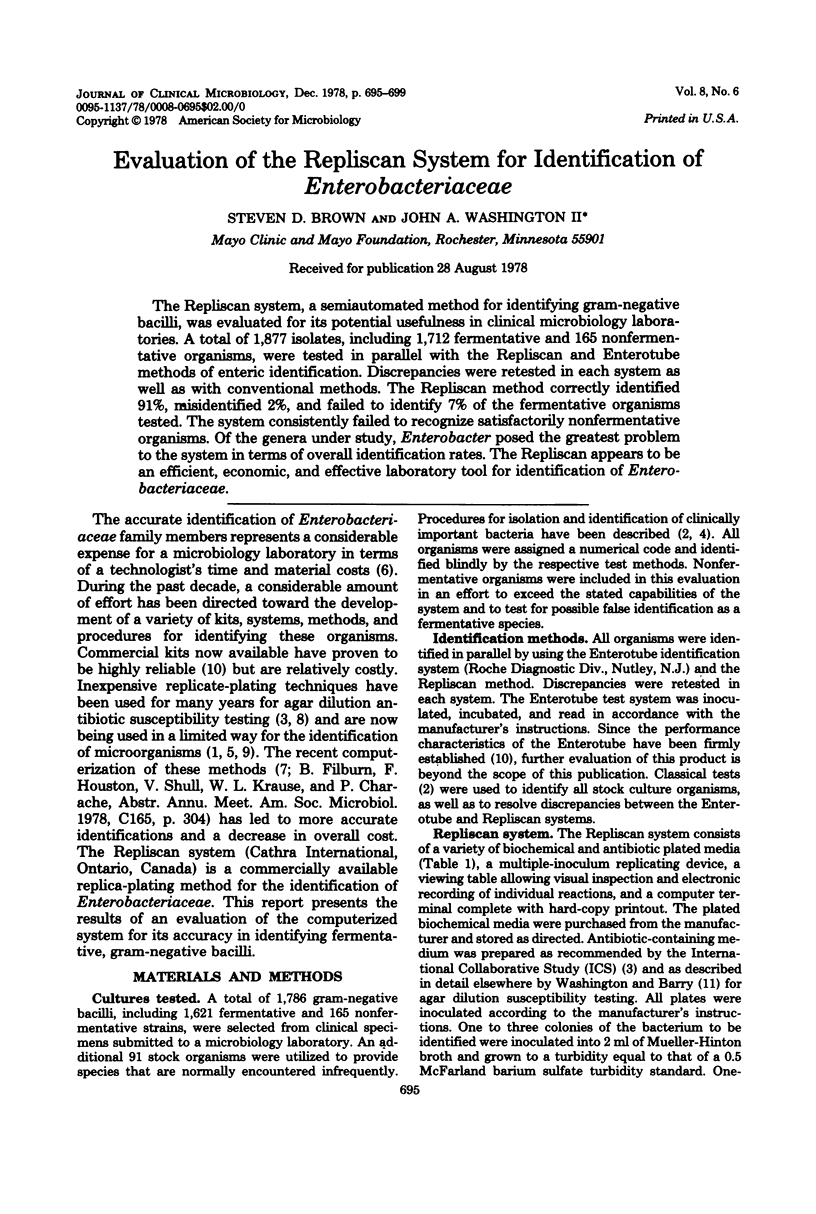
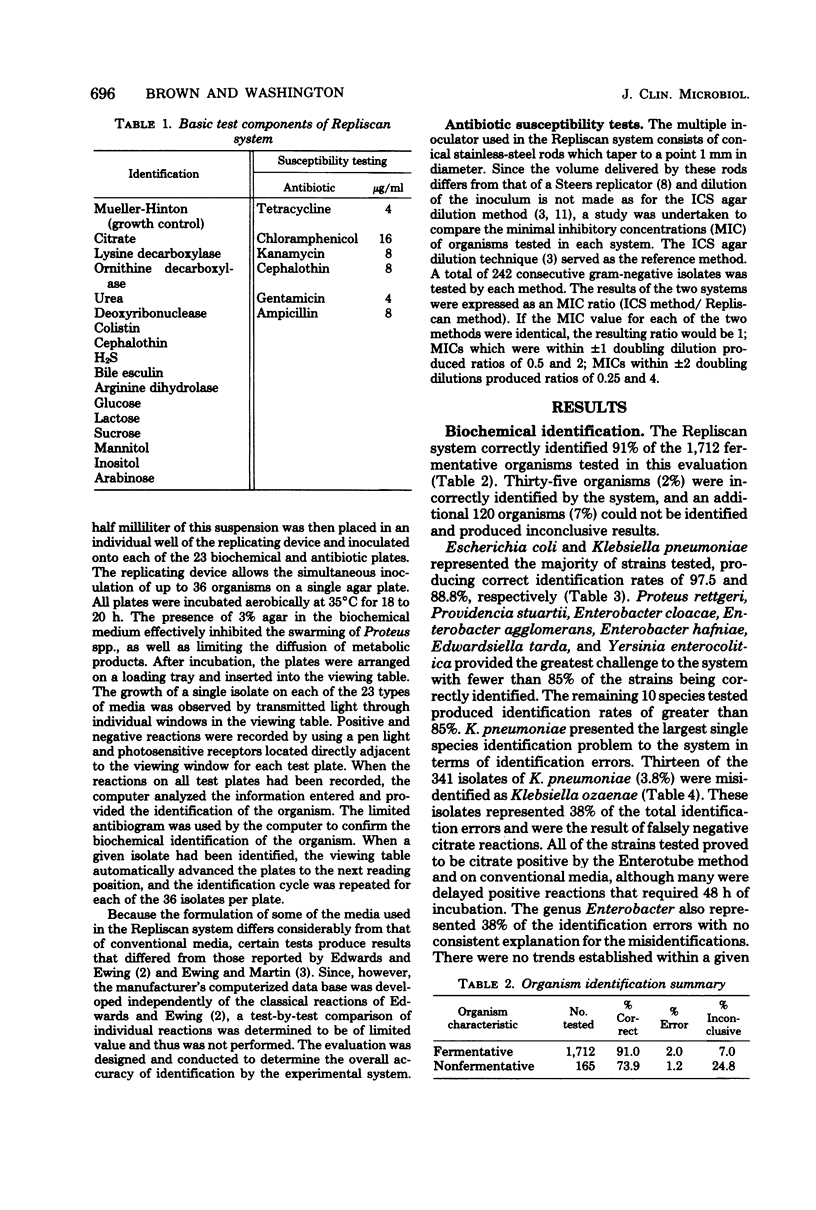
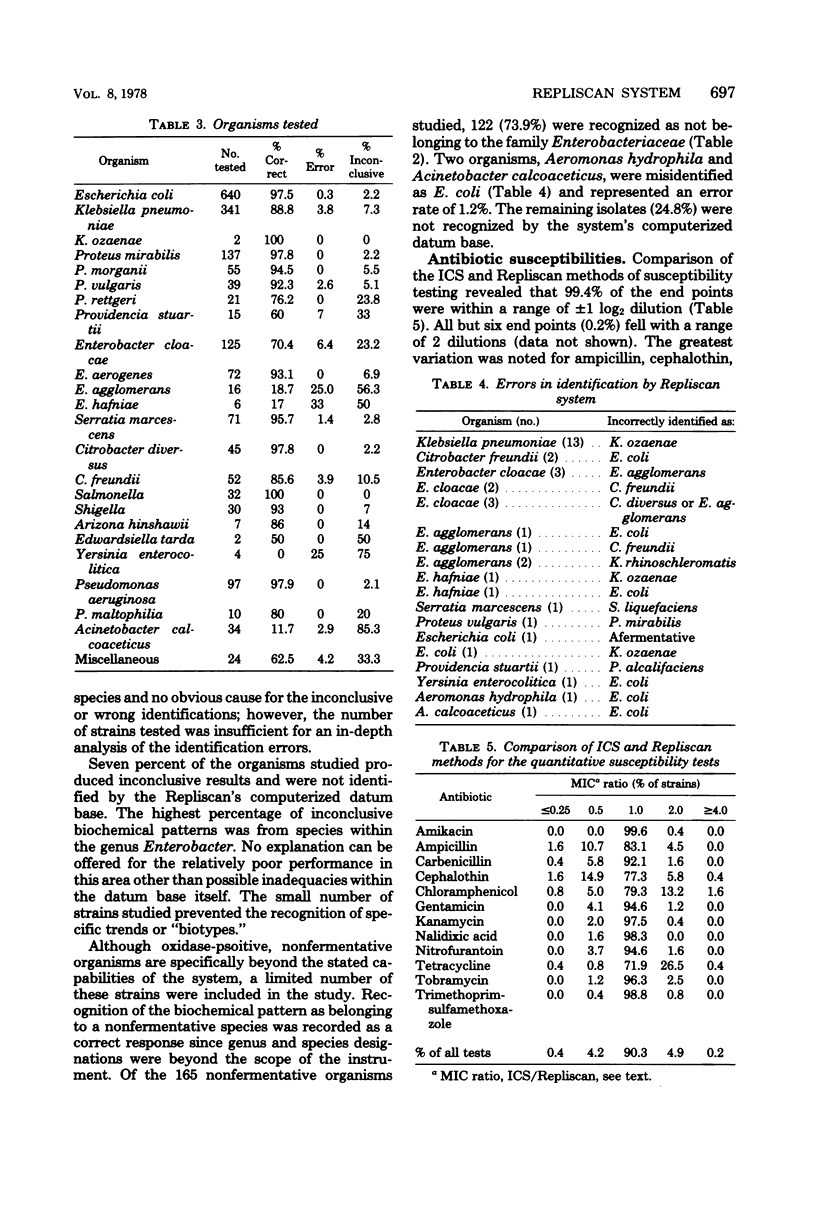
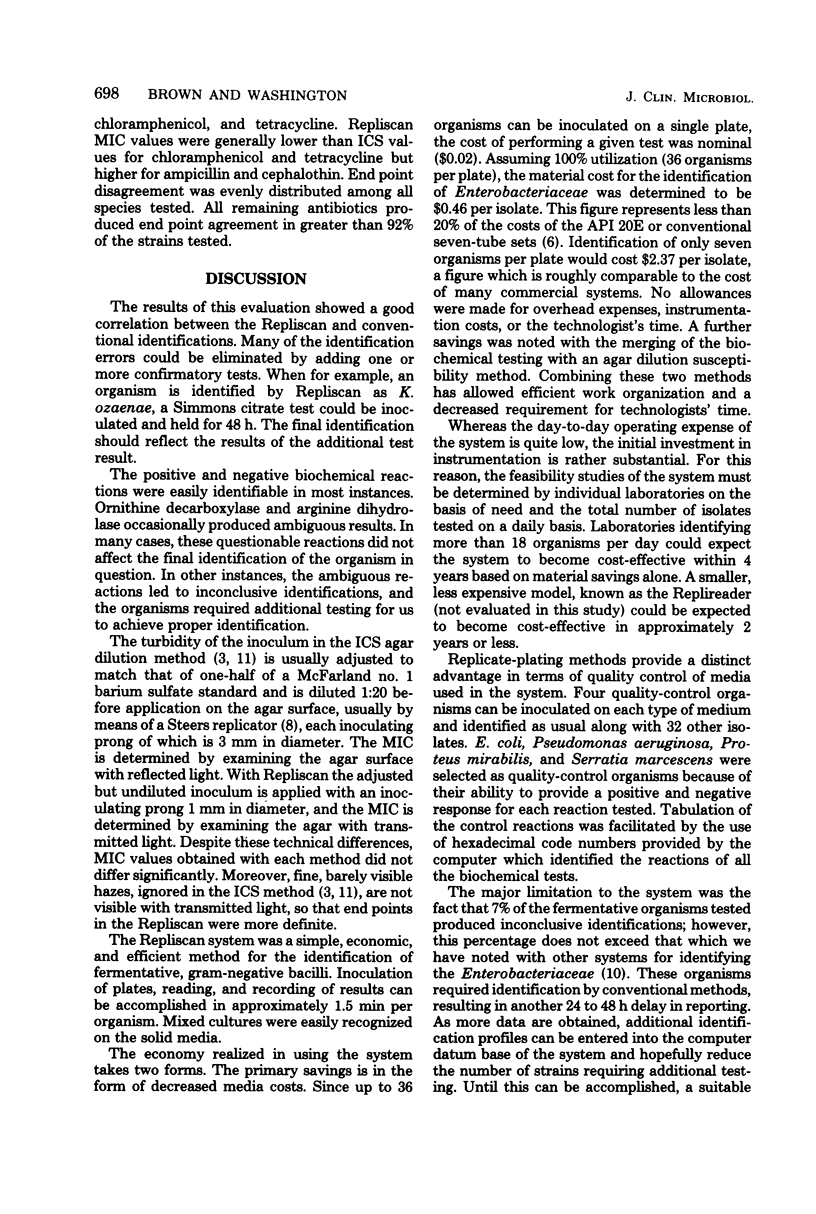
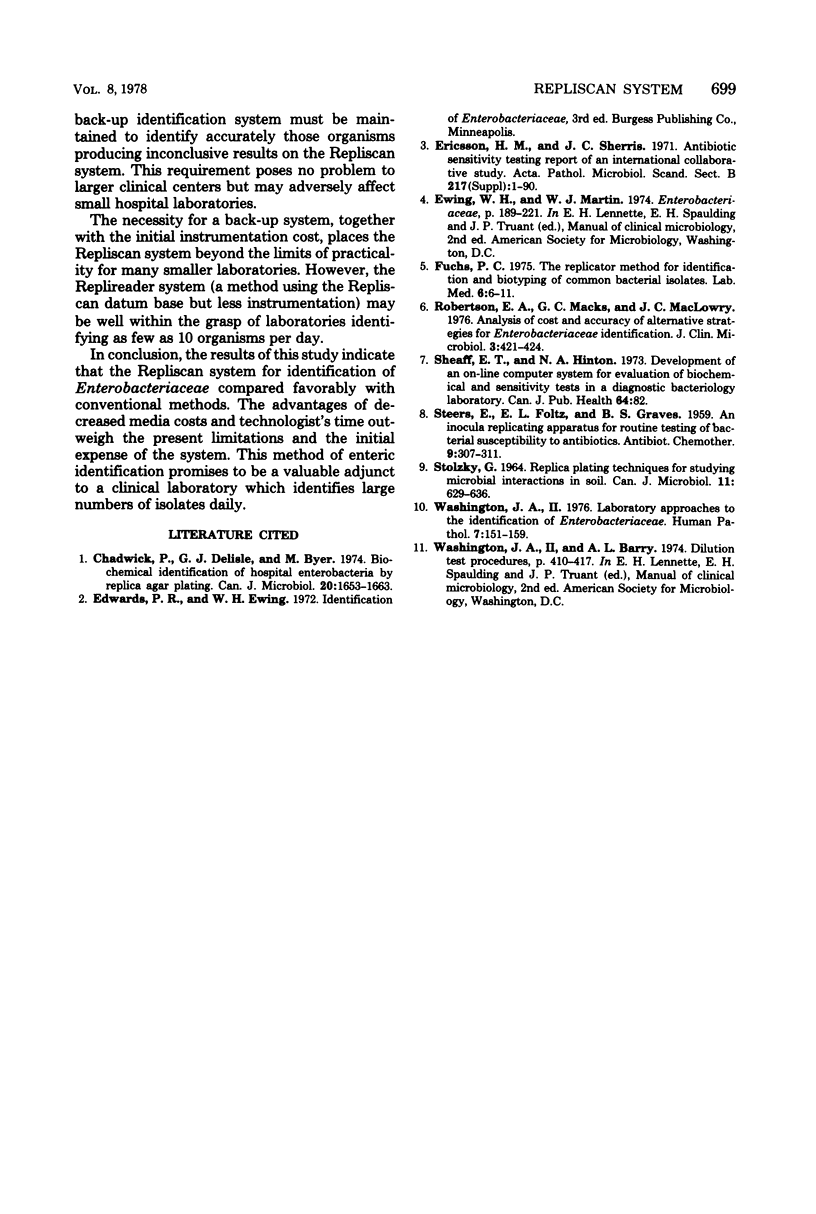
Selected References
These references are in PubMed. This may not be the complete list of references from this article.
- Chadwick P., Delisle G. J., Byer M. Biochemical identification of hospital enterobacteria by replica agar plating. Can J Microbiol. 1974 Dec;20(12):1653–1664. doi: 10.1139/m74-257. [DOI] [PubMed] [Google Scholar]
- Robertson E. A., Macks G. C., MacLowry J. D. Analysis of cost and accuracy of alternative strategies for Enterobacteriaceae identification. J Clin Microbiol. 1976 Apr;3(4):421–424. doi: 10.1128/jcm.3.4.421-424.1976. [DOI] [PMC free article] [PubMed] [Google Scholar]
- Washington J. A., 2nd Laboratory approaches to the identification of Enterobacteriaceae. Hum Pathol. 1976 Mar;7(2):151–159. doi: 10.1016/s0046-8177(76)80018-4. [DOI] [PubMed] [Google Scholar]


